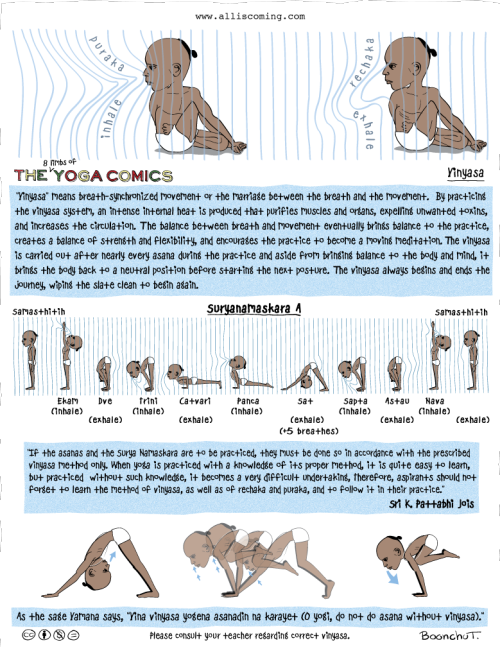Vinyasa:“To begin the practice of yoga, an aspirant should first do the Surya Namaskara (Sun Salutations), and then proceed to the asanas. The Surya Namaskara and the asanas must be practiced in the correct sequence and follow the method of vinyasa. If they are not, or the movement of rechaka and puraka is neglected, no part of the body will become strong, the subtle nadis will not be purified, and, owing to the resulting imbalance, the body, sense organs, mind, and intellect will not develop. They may even become further imbalanced.
If the asanas and the Surya Namaskara are to be practiced, they must be done so in accordance with the prescribed vinyasa method only. As the sage Vamana says, ‘Vina vinyasa yogena asanadin na karayet (O yogi, do not do asana without vinyasa).’ When yoga is practiced with a knowledge of its proper method, it is quite easy to learn, but practiced without such knowledge, it becomes a very difficult undertaking, Therefore, aspirants should not forget to learn the method of vinyasa, as well as of rechaka and puraka, and to follow it in their practice.”From Yoga Mala (Sri K.Pattabhi Jois)“Vinyasa” means breath-synchronized movement or the marriage between the breath and the movement. By practicing the vinyasa system, an intense internal heat is produced that purifies muscles and organs, expelling unwanted toxins, and increases the circulation. The balance between breath and movement eventually brings balance to the practice, creates a balance of strength and flexibility, and encourages the practice to become a moving meditation. The vinyasa is carried out after nearly every asana during the practice and aside from bringing balance to the body and mind, it brings the body back to a neutral position before starting the next posture. The vinyasa always begins and ends the journey, wiping the slate clean to begin again.
Awesome Editor: Jessica Walden and Elise Espat (Albuquerque Ashtanga Yoga Shala)
Cartoon guy: Boonchu Tanti, Ashtanga Illustrations by Boonchu




